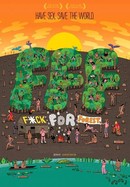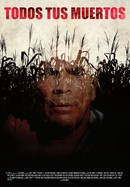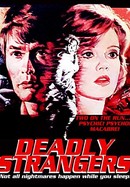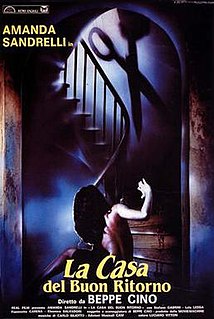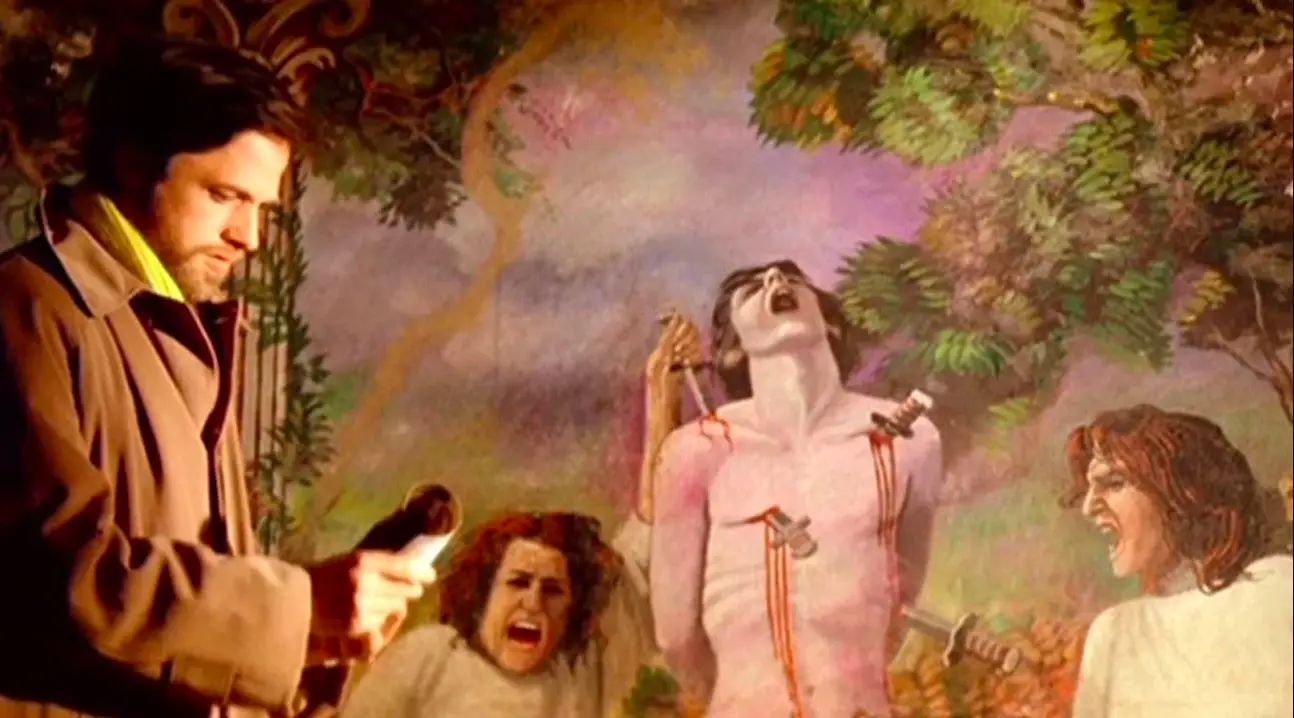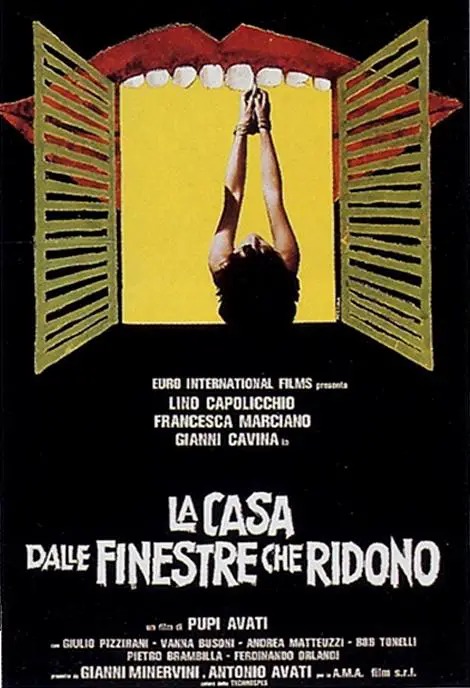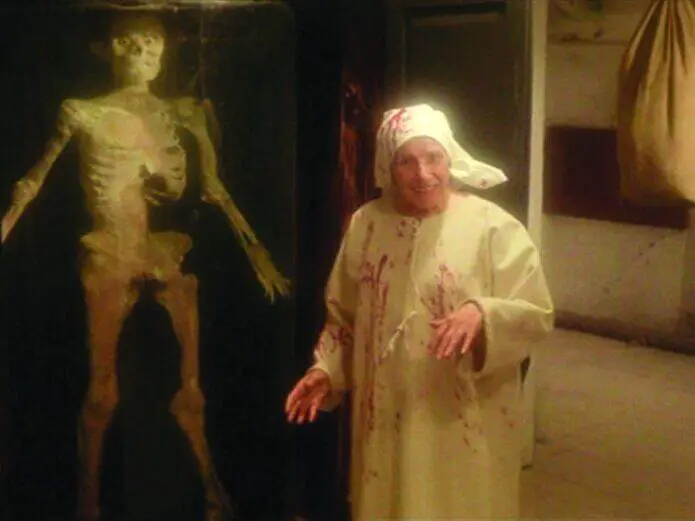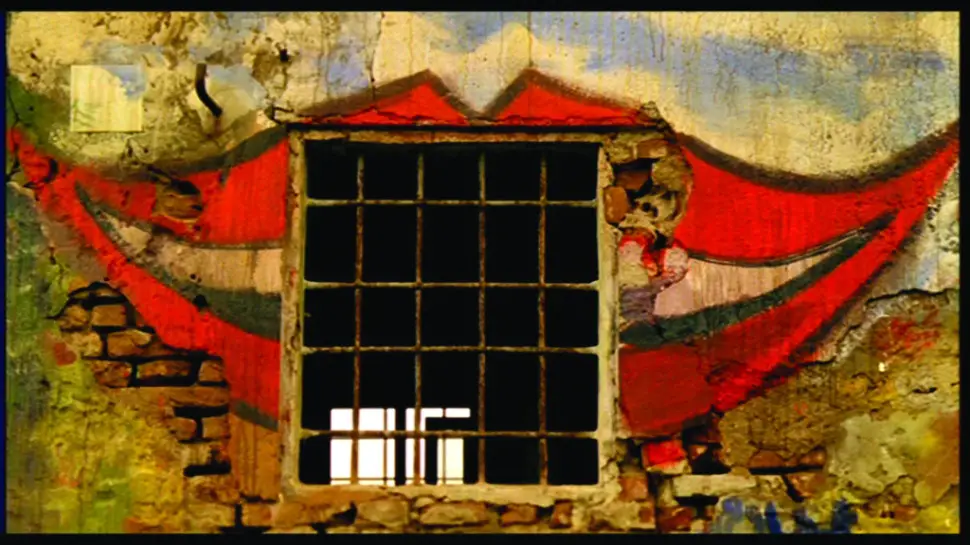From Wikipedia, the free encyclopedia
| The House With Laughing Windows | |
|---|---|

Italian film poster |
|
| Directed by | Pupi Avati |
| Screenplay by |
|
| Story by |
|
| Produced by |
|
| Starring |
|
| Cinematography | Pasquale Rachini[1] |
| Edited by | Giusuppe Baghdighian[1] |
| Music by | Amedeo Tommassi[1] |
|
Production |
A.M.A. Film |
| Distributed by | Euro International Films |
|
Release date |
|
|
Running time |
110 minutes[1] |
| Country | Italy[1] |
| Box office | ₤722.135 million |
The House with Laughing Windows (Italian: La casa dalle finestre che ridono) is a 1976 Italian giallo film co-written and directed by Pupi Avati. The film was shot in Lido degli Scacchi in the Ferrara province of the Emilia-Romagna region in northern Italy.
Plot[edit]
Stefano (Lino Capolicchio) arrives in a village of the Valli di Comacchio area where he has been employed to restore a fresco depicting what appears to be the martyrdom of Saint Sebastian, which has been painted on a rotting wall of the local church by a mysterious, long-dead artist named Legnani. While temporarily taking up residence in the house that had been previously owned by the two sisters of the deceased painter, Stefano begins a romance with a new, beautiful schoolteacher, Francesca (Francesca Marciano), meanwhile learning from various townspeople that the painter had been a madman who had derived his art from real life. Specifically, Stefano learns that the artist — assisted by his two equally-insane sisters — had been a killer who brutally tortured people to death as inspiration for his horrific paintings — a practice that had likely been used for the very painting he is in process of restoring. As Stefano is discouraged for his task throughout the town, some of the villagers are brutally killed — including his employer — and he comes to suspect that their murderer is trying to deter him from discovering the full truth behind the artist and his ominous legacy within the sleepy community.
Cast[edit]
- Lino Capolicchio as Stefano
- Francesca Marciano as Francesca
- Gianni Cavina as Coppola
- Giulio Pizzirani as Antonio Mazza
- Vanna Busoni as Teacher
- Andrea Matteuzzi as Poppi
- Bob Tonelli as Solmi
- Pietro Brambilla as Lidio
- Ferdinando Orlandi as Marshall
- Ines Ciaschetti as Concierge
- Flavia Giorgi as Poppi’s Wife
- Eugene Walter as Priest
- Carla Astolfi as Chambermaid
- Tonino Corazzari as Buono Legnani
- Pina Borione as Laura Legnani
- John Marquette as Saint Sebastian in fresco (uncredited)
Production[edit]
|
This section needs expansion. You can help by adding to it. (December 2014) |
The idea for The House With Laughing Windows came from a story director Pupi Avati had heard as a child involving the exhumation of a priest in the village of Sasso Marconi.[2] An early draft of the script was developed in the early 1970s under the title La luce dell’ultimo piano which was written by both Avati and Antonion Troisio.[3] It was produced by Antonio Cuomo who later backed out of the project.[3] Avati began working on the script again after the financial failure of his film House of Pleasure for Women and made several changes to the character and story.[3] The final story and screenplay was credited to Pupi Avati and Antonio Avati.[1]
The House with Laughing Windows was the first film produced by director Pupi Avati’s company A.M.A. Film.[1][4] The film was shot over five weeks between April and May 1976 in Comacchio and Minerbio, Ferrara, Italy.[1][4] Although the credits state Incir-De Paolis Studios in Rome, this was purely listed for bureaucratic reasons.[1][4][5]
Release[edit]
The House with Laughing Windows was distributed theatrically in Italy by Euro International Films where on 16 August 1976.[1] On its domestic release, the film grossed a total of 722,135,201 Italian lire.[1]
The House with Laughing Windows was released on Region 1 DVD on 18 March 2003 through Paradox Entertainment.[6] On 5 January 2010 the film was released on Region 2 DVD through Metrodome.[7][8]
Reception[edit]
|
This section needs expansion. You can help by adding to it. (December 2014) |
The film has been received well by contemporary critics. AllMovie’s review of the film was favorable, giving it a rating of 3 out of 5, and writing that «[though] fans of typical Italian horror films may find House with the Windows That Laugh [sic] lacking in the stylistic excesses of many of its contemporary companion pieces, it exceeds its contemporaries in almost every other area,» and that it was «imbued with an overwhelming sense of dread that grows to an almost unbearable pitch.»[9]
On review aggregate Rotten Tomatoes, no score has yet been reached with only two critical ratings submitted.[10] The current ratings — both «fresh» — are from Emanuel Levy of emanuellevy.com, who gave the film a 3 out of 5, and Anton Bitel of Eye for Film, who gave the film a 4.5 out of 5, and wrote, «certainly a gripping giallo, but also an intelligent allegory of post-war Italy’s struggles to emerge from the Fascist outrages of its recent past.»[11]
Availability and legacy[edit]
On 9 August 2011 Trailers From Hell! uploaded a video segment on the film to YouTube, in which Eli Roth discusses his feelings on its merits and the giallo genre, opining that it is «a great place to start [into giallo]» and «amongst the best» of the genre, ultimately comparing the film to the work of Dario Argento, Mario Bava, and Lucio Fulci — «the masters of the giallo.»[12]
It was screened as an outstanding example of its genre at the British Film Institute in November 2019.[13]
See also[edit]
- List of Italian films of 1976
References[edit]
Footnotes[edit]
- ^ a b c d e f g h i j k l Curti 2017, p. 157.
- ^ Curti 2017, p. 159.
- ^ a b c Curti 2017, p. 160.
- ^ a b c Curti 2017, p. 158.
- ^ Curti 2017, p. 162.
- ^ «The House with Laughing Windows in Movies & TV». Amazon.com. 11 March 2003. Retrieved December 10, 2012.
- ^ «House With Laughing Windows DVD». CD Universe. Retrieved December 10, 2012.
- ^ «The House With Laughing Windows (Region 2) (Import) (DVD)». Tower.com. Retrieved December 10, 2012.
- ^ Buchanan, Jason. «House with Laughing Windows — Trailers, Reviews, Synopsis, Showtimes and Cast — AllMovie». AllMovie. Retrieved 29 July 2012.
- ^ «La Casa dalle finestre che ridono (The House of the Laughing Windows)». Rotten Tomatoes. Retrieved December 10, 2012.
- ^ Anton Bitel. «The House With Laughing Windows». Retrieved December 10, 2012.
- ^ «Eli Roth on THE HOUSE WITH THE LAUGHING WINDOWS». Trailers From Hell!. Archived from the original on 2021-12-13. Retrieved March 4, 2016.
- ^ «Buy cinema tickets for The House with Laughing Windows | BFI Southbank». BFI site. Retrieved 2019-11-29.
Sources[edit]
- Curti, Roberto (2017). Italian Gothic Horror Films, 1970-1979. McFarland. ISBN 978-1476629605.
External links[edit]
- The House with Laughing Windows at IMDb
- The House with Laughing Windows at AllMovie
- La Casa dalle finestre che ridono (The House with Laughing Windows) at Rotten Tomatoes
The House With Laughing Windows / Дом Со Смеющимися Окнами (a.k.a. La Casa Dalle Finestre Che Ridono) (1976)

Творческий тандем братьев Авати (в котором Пупи — режиссер, а Антонио — продюсер) без устали работает уже больше тридцати лет и до сих пор является серьезной силой в итальянском кино. Начав работать совместно в начале семидесятых, братья знали как взлеты, так и падения, и после очередного такого падения — провала их крупнобюджетной музыкальной комедии «Борделла» (Bordella (1976)), Антонио Авати вспомнил про сценарий (уже лет шесть пылившийся в его комоде), который мог бы стать идеальным кандидатом для недорогой реализации. Пригласив в соавторы для правки сценария двух своих обычных «подельников» — Джианни Кавина и Маурицио Констанцо (Gianni Cavina, Maurizio Costanzo), — братья Авати довольно быстро довели свою первоначальную идею «до ума» и летом 1976-го года приступили к съемкам в небольшой итальянской деревушке. По сути дела, это был чуть ли не «семейный» проект, потому что от начала и до конца над фильмом работало всего 12 человек (в то время как команда любого проекта «средней руки» начиналась человек с 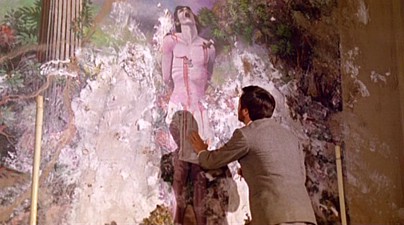

Молодой специалист по реставрации фресок, Стефано, по приглашению местного мэра приезжает в одну из итальянских деревень, где в небольшой церкви ему предстоит восстановить фреску сумасшедшего местного художника, изображающую страдания Святого Себастьяна. Поразившись натуралистичности живописания смертельных страданий святого, Стефано ознакомился и с другими работами местной знаменитости, на которых он не нашел ничего, кроме страданий и смерти. Деревенские жители, прознавшие про его работу, вели себя с ним замкнуто, а вскоре Стефано стал получать телефонные звонки, в которых зловещий сиплый голос советовал ему не трогать фреску и убираться из деревни. Было очевидно, что местные жители скрывают некую страшную тайну, относящуюся к личности художника и его работам, и правда оказалась шокирующей почище любого кошмара — свои шедевры страданий и смерти художник писал с натуры…
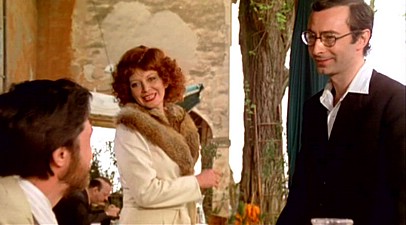
Довольно минималистичными изобразительными средствами Пупи Авати удалось достичь эффектной атмосферы некой жуткой тайны, которую вынуждены носить в себе все без исключения жители деревни, и неясной угрозы, постоянно преследующей Стефано. Многие эпизоды этого фильма идеально эксплуатируют универсальные человеческие страхи, как-то: боязнь темных пустых помещений старого дома, страх встретиться лицом к лицу с давно умершим художником (никто не видел момента его смерти — может, он жив и до сих пор?), жуткая тайна, разгадка которой может стоить человеку жизни и прочее. В лучших традициях самобытных итальянских триллеров, по ходу действия этого фильма зрителю подкладывают немало сюжетных сюрпризов, а концовка и вообще поразит многих, даже «видавших виды» поклонников джиалло, так что несмотря на довольно неторопливое развитие событий, зрительский интерес к картине не ослабевает, 
Как уже отмечалось выше, лента сделала в прокате весьма приличную кассу, причем не за счет массированной маркетинговой кампании, а благодаря людским рекомендациям, когда посмотревшие картину активно советовали сходить на фильм своим друзьям и 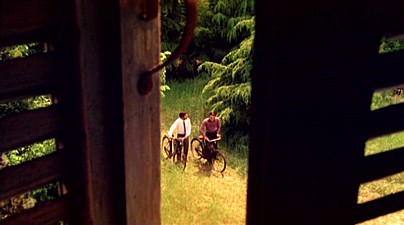
Copyright for all of the graphic materials on this page belongs to its respective
owners.
- Cast & crew
- User reviews
- Trivia
- 19761976
- 1h 50m

Stefano, a young restorer, is commissioned to save a controversial mural located in the church of a small, isolated village.Stefano, a young restorer, is commissioned to save a controversial mural located in the church of a small, isolated village.Stefano, a young restorer, is commissioned to save a controversial mural located in the church of a small, isolated village.
See production, box office & company info
- 75User reviews
- 75Critic reviews
See more at IMDbPro
Videos1
More like this
Review
Oh Sisters, Where Art Thou?
*Minor plot details, no actual spoilers*
Antonio, recently reacquainted with his friend Stefano who has come to renovate a fresco in the local church depicting the Martyrdom of St Sebastian, has discovered something he shouldn’t. Something is rotten in the Italian backwater, but before he can divulge his suspicions he finds himself on the wrong side of a top floor window and plummets to his death while a shadow lurks behind the curtains. So far, so giallo. The gruesome work of art is apparently key to uncovering some secret harboured by the town’s residents, so the bulk of the film is then devoted to delving into the bloody back-story of the deceased Artist and his two insane sisters. The main problem here is that the film finds the central mystery much more mysterious than it actually is, and doesn’t seem to realise it’s given most of the details away. As the Painter’s story unfolds — murky as it is — the important stuff (that the gruesome acts depicted in the artist’s work might be real) is either implied by the promotional blurb, the opening credits sequence or already anticipated by our over-active imaginations.
What the film sorely needs in the absence of any real action is some clarification as to what it is we’re actually supposed to be intrigued by while we wait for the body count to rise. There is a throwaway line later in the film which goes a long way to informing the story as a whole, and cements in our minds the very real danger at hand, but it comes a bit late in the day. Used earlier it would have given Stefano’s amateur sleuthing some much needed impetus (Antonio’s is too mundane and isolated a death and seems forgotten almost immediately). What lies at the heart of the film then, once the back-story has been told (and after a lot of to-ing and fro-ing) is Stefano’s failure to deduce the identity of the sisters and the consequences therein. So everything depends on the final reveal. These are obviously characters we’ve already met — that’s how these things work — but a real rapport needed to be established between Stefano and the peripheral players to give the nature of the revelation (which has been sketchily sign-posted) a much greater emotional punch when it comes. As a result the effect is diluted. Ultimately the biggest mystery is why the town is keeping its secrets in the first place.
On the plus side, coupled with the brooding atmospherics, it is lovely to look at. The camera work isn’t overly elaborate but understated works in the film’s favour. There are some nice shots — one in particular where Stefano walks round the side of a house with his back to it, so we discover, a moment before he does, that the title isn’t simply a metaphor. A palette of greys and smoky blues blends with the thin winter light, with sparing splashes of crimson and orange ochre (emulating the look of Hitchcock’s Frenzy). The artist’s monologue which accompanies a retrospective sepia-tinged slaughter during the opening credits and used again later on is effectively lurid (you’ll need a shower afterwards, followed by dinner and flowers) and the full extent of one haunted local’s involvement with the murderous trio some thirty-odd years earlier lends the film some much needed emotional resonance. Most of all Avati deserves credit for the St Sebastian reference. It seems a pretty innocuous stylistic choice, but there is a significance here which, though not essential, provides one of the true, subtle revelations of the entire film. Provided you put two and two together and know your saints.
The House with Laughing Windows was for so long the ‘lost giallo’ and consequently it seems a bit of giallo envy has bolstered its reputation as a forgotten masterpiece. In terms of pure film-making that’s short of the mark. There are too many uneven moments. Characters disappear ominously, then reappear without acknowledgement. Things go bump in the night which we discover second hand rather than getting to witness, and there’s a curious did they/didn’t they? (have it off) tryst between Stefano and the town’s departing school teacher (if they did he apparently likes to keep not only his socks on but his entire dapper three-piece). That isn’t to say it’s a total bomb by any means either. It depends how invested you find yourself in the Painter’s story, and to some extent how prepared you are to suspend disbelief. If you approach with expectations suitably tempered it’ll probably do the business. Just sit back and soak up the quietly unsettling atmosphere without thinking too much, but be warned, a great time is not assured.
- SJSondergaard
- Mar 17, 2008
Related news
Contribute to this page
Suggest an edit or add missing content
By what name was La casa dalle finestre che ridono (1976) officially released in India in English?
Answer
More to explore
Recently viewed
You have no recently viewed pages
?
Log in
If this type of authorization does not work for you, convert your account using the link
-
-
May 10 2013, 14:06
- История
- Cancel
Lino Capolicchio, Francesca Marciano, Gianni Cavina
Предостаточно таинственная история + великолепные декорации.







Synopsis
…today I portrayed the shameless one as she died…
A young restorer is commissioned to save a fresco representing the suffering of St. Sebastiano, which was painted on the wall of a local church by a mysterious, long-dead artist.
- Cast
- Crew
- Details
- Genres
Cast
Director
Producers
Writers
Editor
Cinematography
Production Design
Composer
Sound
Costumes
Make-Up
Studio
Country
Language
Alternative Titles
Das Haus der lachenden Fenster, La maison aux fenêtres qui rient, Het Huis met de Lachende Vensters, The House with Laughing Windows, Contrato de Sangre
Genres
Themes
Horror, the undead and monster classics Intense violence and sexual transgression Thrillers and murder mysteries
horror, creepy, eerie, blood or gothic scary, horror, creepy, supernatural or frighten horror, gory, scary, killing or slasher cannibals, gory, gruesome, graphic or shock horror, creepy, frighten, eerie or chilling
Show All…
Popular reviews
More
-
This extraordinary Giallo begins with a disturbing montage; torture bathed in sepia, overlaid with creeping piano and a rasping voiceover speaking about colours and purification. We then make a jarring switch to broad daylight where we are introduced a young art restorer and the fresco he has been hired to fix. The partly exposed painting depicting a suffering Saint with certain details hidden; teasing a hidden menace always bubbling beneath the surface. The House of the Laughing Windows is not typical for the genre. It’s a real slow burn and there’s no high body count or gory death scenes. What we do get is an intricately plotted mystery, augmented by an intensely oppressive atmosphere. Pupi Avati makes best use of…
-
Opting for the rural backdrop rather than cosmopolitan, The House with Laughing Windows lives deliciously within confines of the folk horror milieu, lacking the well documented motifs so commonly attributed to the giallo in favor of menacingly unstoppable atmosfear.
Establishing an eeriness from the get go with a disturbing opening (among the genre’s best) before throwing us into the fray with morbid paintings, deranged townsfolk and the local diabolical underbelly, the sinister looking (laughing) windows, and a seething/unforgettable final twist of pure bedlam. A full fledged genre masterpiece with great performances and tight direction that shouldn’t be slept on—but in some weird way I think The House with Laughing Windows enjoys its often left alone place within the genre, it’s eye catching…
-
#Giallo
What a return to my newfound favorite genre. The House of the Laughing Windows is my favorite kind of giallo: a slow-burn psychological mindcreeper set in an isolated village that is real but also the manifestation of your mind. The definiton of that kind of giallo? It hooks its talons into your forehead and rips and rips until your mind itself comes apart. Delectable.
The patiently dripping terror is palpable in how the film goes about its plot of mystery. All the killings happen off-screen, but the killer is as real and human as the inhabitants of the village. This giallo is no police procedural at all; there is no police, only the village-dwellers who are all potentially crazy…
-
This is one seriously dark and disturbing movie and I love it. I actually think this was the very first dvd I rented from Netflix when I originally signed up back in 2006 before streaming was really a thing.
A guy comes to a small village to restore a macabre fresco and gets wrapped up in the secrets behind the painting. Right from the beginning, you know you’re in for a hella dark time with that creepy ass voice talking about pain and suffering and somesuch. I’ve never seen a dubbed version of this and I think that’s probably a good thing because that voice would never be properly recreated.
There’s some beautiful scenery, spooky old houses, strange townsfolk, and…
-
A Quiet Place in the Country. Creepy slow burn isolated town atmos really elevate this to one of the genres best offerings… and it needs to be seen more because House of Laughing Windows is an insane slice of rural giallo horror. The incredible opening is perfectly balanced with an gobsmacker of an ending reveal that always catches me off guard… and sandwiches in between is everything I look for in a deliberately paced descent into madness. A personal favorite that needs the Arrow or Severin treatment.
Wickedly Essential.
-
Damn from that morbid opening sequence I just knew I was in for a brooding nightmare of dread. The guy being tortured while an ultra bleak melody portrays a hypnotic trance of pure madness. House of Laughing Windows? More like Torture Chamber of Crying Guillotines!
Stefano is a young artist who has traveled to a quaint Italian village to restore a painting. A painting rumored to be that of a notorious local maniac! The «snuff painter» was known to paint his models while torturing them so he could capture every moment of pain and suffering. Whoa! As Stefano dives deeper into his restoration he is hurled into a frightening new reality built around a deadly mystery!
Watching this felt like…
-
What a well-constructed build up — we open with intensity and disturbing imagery, cool down with a quiet intro that still inserts a bit of mystery, then builds back up, spiking here and there as pieces of the story are revealed, until we hit the full-scale horrors as the killers are revealed in blood and laughter.
-
If you thought you had seen many films of the genre Giallo and know everything about them as I do, you may not yet have realized that there is this film that few talks about when talking about this famous subgenre born in Italy and may even evade it. Pupi Avati enters for the first time in lands which were already known by great names like Dario Argento or Mario Bava, both stepped with force making great stories that are so iconic in the cinema of terror.
The story is, in general terms, is typical of the model that Giallo follows. I know that it is nothing that Avati has innovated in his time, but, nevertheless, there is something in…
-
The Years of Lead
«I think being a psycho is contagious,» an old man tells Stefano, and he means it pretty literally — his secluded island town is notorious for housing a serial killer who may have «caught» a bad case of «being a psycho» in Brazil, from which he returned with a «beastly savage religion» and ended up killing a few people around town with the help of his two sisters — but taken more figuratively, it’s an apt metaphor for social psychology. It’s not just being a psycho that’s contagious, it’s also being traumatized, and one thing this little island is certainly not suffering from is a lack of shared historical trauma.
Psycho serial killer aside, this island…
-
Pupi Avati’s 1976 giallo is a refreshing spin, mainly because it’s legitimately terrifying. While very much a slow burn and low on scenes of violence, there’s an intensity to it that really lingered with me.
Opening with a hypnotic and deeply disturbing credit sequence, the overwhelmingly dark images and tone then proceeded to cast the entire film in a thick layer of dread.
The story itself concerns a man who is hired to restore a painting in a small town along the Northern coast of Italy. He arrives and things are not quite as they seem, there’s a dark mystery involving the artist, a friend who possibly was murdered, and an overall feeling like our protagonist is slowly descending into… -
There are two ways to succeed on this site (and I just mean accidentally, if you don’t play the twitter game and don’t play the just a bunch of dudes chilling and watching movies with maybe one chick who inexplicably likes this stuff game) like if you are a loner stupid enough to think they can still succeed, you can either really, really, love a movie, or really, really hate it. So, knowing these aren’t for me, I’m setting myself up to write a lukewarm review, and people tend to feel lukewarm about those in return, I’ve noticed.
I’ve always reasoned that if I just knew WHY people found me repellent, I would be cool with it, really ever since…
-
Pupi Avati’s La casa dalle finestre che ridono delivers all the Giallo-slasher-psychological thrills and spills we’re accustomed to from Italian narrative horror of the era with a well groomed cast ripe for the picking.
Young art restorer Stefano, played by the wonderfully beard-resplendent Lino Capolicchio is commissioned to bring a damaged fresco from an artist known as «The Painter of the Agony» back to its former glory. It’s clear from the moment he arrives that some locals are none too keen on his presence though, and as the strange people witness strange behaviours it’s clear that it’s only a matter of time before something terrible will happen. Then the film squeezes. Slowing down and applying its special type of pressure.…
| Дом со смеющимися окнами | |
|---|---|
 |
|
| Режиссер | Пупи Авати |
| Продюсер |
|
| Сценарий |
|
| Сюжет |
|
| В главной роли |
|
| Музыка | Амедео Томмасси |
| Кинематография | Паскуале Рачини |
| Отредактировал | Джузуппе Багдигиан |
| Производство. компания | AMA Фильм |
| Распространяется | Euro International Film |
| Дата выхода |
|
| Продолжительность | 110 минут |
| Страна | Италия |
| кассовые сборы | ₤ 722,135 миллиона |
Дом со смеющимися окнами (итальянский : La casa dalle finestre che ridono) — итальянец 1976 года Джалло фильм был соавтором сценария и режиссером Пупи Авати. Фильм снимался в Лидо-дельи-Скакки в провинции Феррара региона Эмилия-Романья на севере Италии.
Содержание
- 1 Сюжет
- 2 Состав
- 3 Производство
- 4 Выпуск
- 5 Прием
- 6 Доступность и устаревшая версия
- 7 См. Также
- 8 Ссылки
- 8.1 Сноски
- 8.2 Источники
- 9 Внешние ссылки
Участок
Стефано (Лино Каполиччио ) прибывает в деревню в области Валли ди Комаккьо где он был нанят для реставрации фрески, изображающей мученическую смерть святого Себастьяна, которая была нарисована на гниющей стене местной церкви таинственным, долго- мертвый художник по имени Леньяни. Временно поселяясь в доме, который ранее принадлежал двум сестрам покойного художника, Стефано завязывает роман с новой красивой школьной учительницей, Франческой (Франческа Марчиано ), которая тем временем учится у разных горожан. что художник был сумасшедшим, который черпал свое искусство из реальной жизни. В частности, Стефано узнает, что художник, которому помогали его две одинаково безумные сестры, был убийцей, который зверски замучил людей до смерти, что послужило источником вдохновения для его ужасных картин — практика, которая, вероятно, использовалась для самой картины, которую он создает. восстановление. Поскольку Стефано не одобряет его задачу по всему городу, некоторые жители деревни жестоко убиты, в том числе его работодатель, и он начинает подозревать, что их убийца пытается удержать его от раскрытия всей правды о художнике и его зловещем наследии. сонное сообщество.
В ролях
- Лино Каполиччио в роли Стефано
- Франческа Марчиано в роли Франчески
- Джанни Кавина в роли Копполы
- Джулио Пиццирани в роли Антонио Мацца
- Ванна Бузони в роли Учителя
- Андреа Маттеуцци в роли Поппи
- Боб Тонелли в роли Солми
- Пьетро Брамбилла в роли Лидио
- Фердинандо Орланди в роли Маршалла
- Инес Чиаскетти в роли консьержа
- Флавия Джорджи в роли жены Поппи
- Юджин Уолтер в роли священника
- Карла Астольфи в роли горничной
- Тонино Корацца в роли Буоно Леньяни
- Пина Борионе в роли Лауры Леньяни
- Джон Маркетт в роли Святого Себастьяна на фреске (в титрах)
Производство
Идея для «Дома со смеющимися окнами» принадлежит сценаристу Пупи Авати в детстве слышал об эксгумации священника в деревне Сассо Маркони. Ранний вариант сценария был разработан в начале 1970-х годов под названием La luce dell’ultimo piano, который был написан Авати и Антонионом Троизио. Его спродюсировал тот, кто позже отказался от проекта. Авати снова начал работать над сценарием после финансового краха своего фильма Дом удовольствий для женщин и внес несколько изменений в характер и историю. Финальный сюжет и сценарий были приписаны Пупи Авати и Антонио Авати.
Дом со смеющимися окнами был первым фильмом, созданным компанией A.M.A. режиссера Пупи Авати. Фильм. Фильм снимался в течение пяти недель с апреля по май 1976 года в городах Комаккио и Минербио, Феррара, Италия. Хотя в титрах указано Incir-De Paolis Studios в Риме, это было перечислено чисто по бюрократическим причинам.
Выпуск
«Дом с смеющимися окнами» был показан в Италии кинотеатром Euro International Film, где 16 Август 1976 года. На внутреннем прокате фильм собрал в общей сложности 722 135 201 итальянских лир.
Дом с смеющимися окнами был выпущен на Region 1 DVD 18 марта 2003 года. через Paradox Entertainment. 5 января 2010 года фильм был выпущен на DVD Region 2 через Metrodome.
Reception
Фильм был хорошо принят современной критикой. AllMovie оценил фильм положительно, поставив ему оценку 3 из 5 и написав, что «[хотя] поклонники типичных итальянских фильмов ужасов могут найти« Дом с окнами, которые смеются »[sic] лишенный стилистических излишеств, присущих многим его современным произведениям-компаньонам, он превосходит своих современников почти во всех других областях », и что он« проникнут непреодолимым чувством ужаса, достигающим почти невыносимого уровня ».
По совокупности обзоров Rotten Tomatoes пока что не набрано ни одной оценки, только две оценки критики представлены. Текущие оценки — обе «свежие» — от Эмануэля Леви из emanuellevy.com, который поставил фильму 3 балла из 5, и Антона Битела из Eye for Film, который дал фильму 4,5 балла из 5, и писал: «безусловно, захватывающий giallo, но также и интеллектуальная аллегория борьбы послевоенной Италии за выход из фашистских бесчинств недавнего прошлого»
Доступность и устаревшая версия
9 августа 2011 года Trailers From Hell! загрузили на YouTube фрагмент видео, в котором Эли Рот обсуждает свои чувства по существу и жанру giallo, полагая, что это «отличное место для начала [в giallo]» и «среди лучших» в жанре, в конечном итоге сравнивая фильм с произведением Дарио Ардженто, Марио Бава и Лусио Фульчи — «мастера джалло»
. Он был показан как выдающийся пример своего жанра в Британском институте кино в ноябре 2019 года.
См. также
- Список итальянских фильмов 1976 года
Ссылки
Сноски
Источники
Внешние ссылки
- Дом со смеющимися окнами на IMDb
- Дом с смеющимися окнами в AllMovie
- La Casa dalle finestre che ridono (Дом со смеющимися окнами) в Rotten Tomatoes
Содержание
- The House with Laughing Windows
- You might also like
- Rate And Review
- What did you think of the movie? (optional)
- How did you buy your ticket?
- Let’s get your review verified.
- You’re almost there! Just confirm how you got your ticket.
- What did you think of the movie? (optional)
- How did you buy your ticket?
- You haven’t finished your review yet, want to submit as-is?
- Are you sure?
- Want to submit changes to your review before closing?
- Done Already? A few more words can help others decide if it’s worth watching
- Done Already? A few more words can help others decide if it’s worth watching
- Letterboxd — Your life in film
- Where to watch
- The House of the Laughing Windows
- Synopsis
- Director
- Producers
- Writers
- Editor
- Cinematography
- Production Design
- Composer
- Sound
- Costumes
- Make-Up
- Studio
- Country
- Language
- Alternative Titles
- Genres
- Popular reviews
- The House with Laughing Windows
- Contents
- Production
- Release
- Reception
- Availability and legacy
- See also
- Related Research Articles
The House with Laughing Windows
1976, Mystery & thriller/Drama, 1h 50m
You might also like
Rate And Review
Oof, that was Rotten.
Meh, it passed the time.
It’s good – I’d recommend it.
So Fresh: Absolute Must See!
What did you think of the movie? (optional)
You’re almost there! Just confirm how you got your ticket.
How did you buy your ticket?
Let’s get your review verified.
AMCTheatres.com or AMC App New
Cinemark Coming Soon
We won’t be able to verify your ticket today, but it’s great to know for the future.
We won’t be able to verify your ticket today, but it’s great to know for the future.
Theater box office or somewhere else
By opting to have your ticket verified for this movie, you are allowing us to check the email address associated with your Rotten Tomatoes account against an email address associated with a Fandango ticket purchase for the same movie.
You’re almost there! Just confirm how you got your ticket.
Oof, that was Rotten.
Meh, it passed the time.
It’s good – I’d recommend it.
So Fresh: Absolute Must See!
What did you think of the movie? (optional)
How did you buy your ticket?
AMCTheatres.com or AMC App New
Cinemark Coming Soon
We won’t be able to verify your ticket today, but it’s great to know for the future.
We won’t be able to verify your ticket today, but it’s great to know for the future.
Theater box office or somewhere else
By opting to have your ticket verified for this movie, you are allowing us to check the email address associated with your Rotten Tomatoes account against an email address associated with a Fandango ticket purchase for the same movie.
You haven’t finished your review yet, want to submit as-is?
You can always edit your review after.
Are you sure?
Verified reviews are considered more trustworthy by fellow moviegoers.
Want to submit changes to your review before closing?
Done Already? A few more words can help others decide if it’s worth watching
They won’t be able to see your review if you only submit your rating.
Done Already? A few more words can help others decide if it’s worth watching
They won’t be able to see your review if you only submit your rating.
The image is an example of a ticket confirmation email that AMC sent you when you purchased your ticket. Your Ticket Confirmation # is located under the header in your email that reads «Your Ticket Reservation Details». Just below that it reads «Ticket Confirmation#:» followed by a 10-digit number. This 10-digit number is your confirmation number.
Your AMC Ticket Confirmation# can be found in your order confirmation email.
Источник
Letterboxd — Your life in film
Where to watch
The House of the Laughing Windows
1976 ‘La casa dalle finestre che ridono’ Directed by Pupi Avati
Synopsis
A young restorer is commissioned to save a fresco representing the suffering of St. Sebastiano, which was painted on the wall of a local church by a mysterious, long-dead artist.
Director
Producers
Writers
Editor
Cinematography
Production Design
Composer
Sound
Costumes
Make-Up
Studio
Country
Language
Alternative Titles
Das Haus der lachenden Fenster, La maison aux fenêtres qui rient, Het Huis met de Lachende Vensters, The House with Laughing Windows, Contrato de Sangre
Genres
110 mins More at IMDb TMDb Report this film
Popular reviews
Opting for the rural backdrop rather than cosmopolitan, The House with Laughing Windows lives deliciously within confines of the folk horror milieu, lacking the well documented motifs so commonly attributed to the giallo in favor of menacingly unstoppable atmosfear.
Establishing an eeriness from the get go with a disturbing opening (among the genre’s best) before throwing us into the fray with morbid paintings, deranged townsfolk and the local diabolical underbelly, the sinister looking (laughing) windows, and a seething/unforgettable final twist of pure bedlam. A full fledged genre masterpiece with great performances and tight direction that shouldn’t be slept on—but in some weird way I think The House with Laughing Windows enjoys its often left alone place within the genre, it’s eye catching…
What a return to my newfound favorite genre. The House of the Laughing Windows is my favorite kind of giallo: a slow-burn psychological mindcreeper set in an isolated village that is real but also the manifestation of your mind. The definiton of that kind of giallo? It hooks its talons into your forehead and rips and rips until your mind itself comes apart. Delectable.
The patiently dripping terror is palpable in how the film goes about its plot of mystery. All the killings happen off-screen, but the killer is as real and human as the inhabitants of the village. This giallo is no police procedural at all; there is no police, only the village-dwellers who are all potentially crazy…
This is one seriously dark and disturbing movie and I love it. I actually think this was the very first dvd I rented from Netflix when I originally signed up back in 2006 before streaming was really a thing.
A guy comes to a small village to restore a macabre fresco and gets wrapped up in the secrets behind the painting. Right from the beginning, you know you’re in for a hella dark time with that creepy ass voice talking about pain and suffering and somesuch. I’ve never seen a dubbed version of this and I think that’s probably a good thing because that voice would never be properly recreated.
There’s some beautiful scenery, spooky old houses, strange townsfolk, and…
A Quiet Place in the Country. Creepy slow burn isolated town atmos really elevate this to one of the genres best offerings. and it needs to be seen more because House of Laughing Windows is an insane slice of rural giallo horror. The incredible opening is perfectly balanced with an gobsmacker of an ending reveal that always catches me off guard. and sandwiches in between is everything I look for in a deliberately paced descent into madness. A personal favorite that needs the Arrow or Severin treatment.
Damn from that morbid opening sequence I just knew I was in for a brooding nightmare of dread. The guy being tortured while an ultra bleak melody portrays a hypnotic trance of pure madness. House of Laughing Windows? More like Torture Chamber of Crying Guillotines!
Stefano is a young artist who has traveled to a quaint Italian village to restore a painting. A painting rumored to be that of a notorious local maniac! The «snuff painter» was known to paint his models while torturing them so he could capture every moment of pain and suffering. Whoa! As Stefano dives deeper into his restoration he is hurled into a frightening new reality built around a deadly mystery!
Watching this felt like…
If you thought you had seen many films of the genre Giallo and know everything about them as I do, you may not yet have realized that there is this film that few talks about when talking about this famous subgenre born in Italy and may even evade it. Pupi Avati enters for the first time in lands which were already known by great names like Dario Argento or Mario Bava, both stepped with force making great stories that are so iconic in the cinema of terror.
The story is, in general terms, is typical of the model that Giallo follows. I know that it is nothing that Avati has innovated in his time, but, nevertheless, there is something in…
There are two ways to succeed on this site (and I just mean accidentally, if you don’t play the twitter game and don’t play the just a bunch of dudes chilling and watching movies with maybe one chick who inexplicably likes this stuff game) like if you are a loner stupid enough to think they can still succeed, you can either really, really, love a movie, or really, really hate it. So, knowing these aren’t for me, I’m setting myself up to write a lukewarm review, and people tend to feel lukewarm about those in return, I’ve noticed.
I’ve always reasoned that if I just knew WHY people found me repellent, I would be cool with it, really ever since…
«I think being a psycho is contagious,» an old man tells Stefano, and he means it pretty literally — his secluded island town is notorious for housing a serial killer who may have «caught» a bad case of «being a psycho» in Brazil, from which he returned with a «beastly savage religion» and ended up killing a few people around town with the help of his two sisters — but taken more figuratively, it’s an apt metaphor for social psychology. It’s not just being a psycho that’s contagious, it’s also being traumatized, and one thing this little island is certainly not suffering from is a lack of shared historical trauma.
Psycho serial killer aside, this island…
Pupi Avati’s 1976 giallo is a refreshing spin, mainly because it’s legitimately terrifying. While very much a slow burn and low on scenes of violence, there’s an intensity to it that really lingered with me.
Opening with a hypnotic and deeply disturbing credit sequence, the overwhelmingly dark images and tone then proceeded to cast the entire film in a thick layer of dread.
The story itself concerns a man who is hired to restore a painting in a small town along the Northern coast of Italy. He arrives and things are not quite as they seem, there’s a dark mystery involving the artist, a friend who possibly was murdered, and an overall feeling like our protagonist is slowly descending into…
A young art restorer arrives in an isolated village in Northern Italy to restore a fresco that depicts the suffering of a Catholic saint that’s inside an old church. Memories of fascism are added to the mix of mystery, insanity, and religion to create a dark feeling of dread as you discover those kinds of details about the artist who painted the fresco that are dark and still have a pulse. Rather than a whole lot happening to entertain you, that kind of kinetic style becomes a more deliberate drip of atmosphere in which you’re going to get your doses of dread when they come. Hysterical and maniacal laughing will stay with you.
Richly textured, relatively subdued gothic giallo. Well, as subdued as a folk-horror giallo about an art restorer summoned to repair a fresco by a deranged syphilitic painter who captures his subjects as they are dying, and his incestuous relationship with his equally twisted sisters. With a great creepy slow-burn atmosphere, painterly cinematography, attractive performances, and a wonderfully preposterous finalé, La casa dalle finestre che ridono is an instant favorite.
Источник
The House with Laughing Windows
Cinematography Pasquale Rachini [1] Edited by Giusuppe Baghdighian [1] Music by Amedeo Tommassi [1]
Contents
Stefano (Lino Capolicchio) arrives in a village of the Valli di Comacchio area where he has been employed to restore a fresco depicting what appears to be the martyrdom of Saint Sebastian, which has been painted on a rotting wall of the local church by a mysterious, long-dead artist named Legnani. While temporarily taking up residence in the house that had been previously owned by the two sisters of the deceased painter, Stefano begins a romance with a new, beautiful schoolteacher, Francesca (Francesca Marciano), meanwhile learning from various townspeople that the painter had been a madman who had derived his art from real life. Specifically, Stefano learns that the artist — assisted by his two equally-insane sisters — had been a killer who brutally tortured people to death as inspiration for his horrific paintings — a practice that had likely been used for the very painting he is in process of restoring. As Stefano is discouraged for his task throughout the town, some of the villagers are brutally killed — including his employer — and he comes to suspect that their murderer is trying to deter him from discovering the full truth behind the artist and his ominous legacy within the sleepy community.
Production
The idea for The House With Laughing Windows came from a story director Pupi Avati had heard as a child involving the exhumation of a priest in the village of Sasso Marconi. [2] An early draft of the script was developed in the early 1970s under the title La luce dell’ultimo piano which was written by both Avati and Antonion Troisio. [3] It was produced by Antonio Cuomo who later backed out of the project. [3] Avati began working on the script again after the financial failure of his film House of Pleasure for Women and made several changes to the character and story. [3] The final story and screenplay was credited to Pupi Avati and Antonio Avati. [1]
The House with Laughing Windows was the first film produced by director Pupi Avati’s company A.M.A. Film. [1] [4] The film was shot over five weeks between April and May 1976 in Comacchio and Minerbio, Ferrara, Italy. [1] [4] Although the credits state Incir-De Paolis Studios in Rome, this was purely listed for bureaucratic reasons. [1] [4] [5]
Release
The House with Laughing Windows was distributed theatrically in Italy by Euro International Films where on 16 August 1976. [1] On its domestic release, the film grossed a total of 722,135,201 Italian lire. [1]
The House with Laughing Windows was released on Region 1 DVD on 18 March 2003 through Paradox Entertainment. [6] On 5 January 2010 the film was released on Region 2 DVD through Metrodome. [7] [8]
Reception
The film has been received well by contemporary critics. AllMovie’s review of the film was favorable, giving it a rating of 3 out of 5, and writing that «[though] fans of typical Italian horror films may find House with the Windows That Laugh [sic] lacking in the stylistic excesses of many of its contemporary companion pieces, it exceeds its contemporaries in almost every other area,» and that it was «imbued with an overwhelming sense of dread that grows to an almost unbearable pitch.» [9]
On review aggregate Rotten Tomatoes, no score has yet been reached with only two critical ratings submitted. [10] The current ratings — both «fresh» — are from Emanuel Levy of emanuellevy.com, who gave the film a 3 out of 5, and Anton Bitel of Eye for Film, who gave the film a 4.5 out of 5, and wrote, «certainly a gripping giallo, but also an intelligent allegory of post-war Italy’s struggles to emerge from the Fascist outrages of its recent past.» [11]
Availability and legacy
On 9 August 2011 Trailers From Hell! uploaded a video segment on the film to YouTube, in which Eli Roth discusses his feelings on its merits and the giallo genre, opining that it is «a great place to start [into giallo]» and «amongst the best» of the genre, ultimately comparing the film to the work of Dario Argento, Mario Bava, and Lucio Fulci — «the masters of the giallo.» [12]
It was screened as an outstanding example of its genre at the British Film Institute in November 2019. [13]
See also
Related Research Articles
Maurizio Costanzo is an Italian television host, journalist, screenwriter and film director.
Giuseppe Avati, better known as Pupi Avati, is an Italian film director, producer, and screenwriter. He is known to horror film fans for his two giallo masterpieces, The House with Laughing Windows (1976) and Zeder (1983).
George Eastman is an Italian actor and screenwriter well known for his frequent collaborations with notorious director Joe D’Amato. He is most famous for his role as the insane, cannibalistic serial killer Klaus Wortmann in the gory 1980 horror film Antropophagus. He also played a similar role in its 1981 follow-up, Absurd. Both films were directed by D’Amato and written by Eastman.
Giallo is the Italian term designating mystery fiction and thrillers. The word giallo is Italian for yellow. The term derives from a series of cheap paperback mystery and crime thriller novels with yellow covers that were popular in Italy.
Lamberto Bava is an Italian film director. Born in Rome, Bava began working as an assistant director for his director father Mario Bava. Lamberto co-directed the 1979 television film La Venere d’Ille with his father and in 1980 directed his first solo feature film Macabre.
Sleepless is a 2001 Italian giallo film directed by Dario Argento. The film stars Max von Sydow and Stefano Dionisi and marks Argento’s return to the giallo subgenre. The film was another box office success when it opened in Italy, taking in over 5,019,733,505 lira by the end of its theatrical run.
Zeder is a 1983 Italian horror film directed by Pupi Avati, starring Gabriele Lavia. The story is about a young novelist’s discovery of the writings of a late scientist who had found a means of reviving the dead.
The House of Clocks is an Italian horror film directed by Lucio Fulci.
Gianni Cavina is an Italian film actor. He has appeared in more than 45 films since 1949. Born in Bologna, Cavina trained as a stage actor at the Teatro Stabile di Bologna, under the direction of Franco Parenti. He made his film debut in the 1968 horror Balsamus, l’uomo di Satana, directed by Pupi Avati, with whom he had a long collaboration, starring in many of his films.
Sette note in nero is a 1977 Italian giallo film directed by Lucio Fulci and written by Roberto Gianviti and Dardano Sacchetti. Sette note in nero stars Jennifer O’Neill, Gianni Garko, Marc Porel, and Ida Galli. The film involves a woman who begins experiencing psychic visions that lead her to discover a murder, her husband is charged with the killing. The psychic must embark on an investigation with a paranormal researcher to clear her husband’s name of the crime.
Macabre is a 1980 Italian horror film directed by Lamberto Bava.
The Hideout is a 2007 Italian-American mystery film written and directed by Pupi Avati. It marked the comeback of Avati to the thriller genre after a series of intimate dramas and nostalgic comedies.
Omicidio per appuntamento is a 1966 giallo film directed by Mino Guerrini. The film stars George Ardisson, Günther Stoll and Ella Karin. Adapted from a novel by Franco Enna, the film has been described as «stylish» and «flamboyant», and has been seen as inspired by the work of Mario Bava.
Solamente nero, internationally released as The Bloodstained Shadow, is a 1978 Italian giallo film co-written and directed by Antonio Bido. The film was referred to as «a fine example of a competent giallo, as it contains all of the requisite elements». Paul Simpson wrote about the film: «The pacing goes awry, but Bido uses the unusual setting well and the murders are memorably gory.»
The Nastro d’Argento is a film award assigned each year, since 1948, by Sindacato Nazionale dei Giornalisti Cinematografici Italiani, the association of Italian film critics.
L’arcano incantatore, internationally released as The Mysterious Enchanter, is a 1996 Italian horror film directed by Pupi Avati and set in the 18th century.
Lidia Broccolino is an Italian film, television and stage actress.
La Casa del Buon Ritorno is a 1986 Italian giallo written and directed by Beppe Cino.
House of Pleasure for Women is a 1976 satirical comedy film written and directed by Pupi Avati and starring Gigi Proietti, Christian De Sica, Gianni Cavina, Al Lettieri and Vincent Gardenia.
Tutti defunti. tranne i morti is a 1977 film directed by Pupi Avati.
Источник
Дом со смеющимися окнами
(1976)
| страна |
Италия |
| длительность | 1 ч 50 мин |
| премьера: Мир | 20 августа 1976 |
| возраст | |
| родительский контроль | ненормативная лексика, жестокость/кровь |
|
|
| студии производства | A.M.A. Film |
| другие названия |
The House of the Laughing Windows (Великобритания) The House with Laughing Windows (США) |
Все актёры и съёмочная группа
в главных ролях
режиссёр
оператор
сценаристы
композитор
продюсеры
режиссёр
оператор
сценаристы
композитор
продюсеры
монтажёр
художник
Кадры Постеры Скриншоты Обложки
Похожие фильмы Похожих фильмов пока нет, но вы можете их добавить:
Exactly 45 years ago, on August 16, 1976, «The house with laughing windows», the cult-movie by Pupi Avati ascribable to the so-called vein of the «Padano Gothic». In the film, the disturbing element of the peasant culture in which the Emilian director grew up and more exotic black suggestions, from Caribbean macumbas to self-sacrifice shared by the mystic and the madman, converge.
di Marco Maculotti
Originally published on INLAND: Pupi Avati, n. 10/2019, Bietti Publisher
«The first fear I felt is certainly linked to the rural tale and the relationship with death, which always recurs in peasant culture» [1], was able to confess Pupi Avati, revealing the first source from which his very personal poetics arose: that of «Gothic padano», a definition coined by industry experts to describe his peculiar homemade way of making horror films. A horror not nocturnal and dark, but rather panic e meridian, which hits its intended victim (the spectator) perpendicularly like the sun at its zenith in the countryside of Emilia-Romagna. An atavistic terror that sometimes emerges through the exhibition meshes of peasant tales told around the fire, on winter evenings, from the oldest to the youngest: precisely from that listening, Our was able to distill precious material for the purpose of building his very personal horror narrative system.
One must therefore think not of mere psychological madness, comparing himself with the painter Buono Legnani of The house with laughing windows: at a certain point in the film one speaks explicitly, referring to the nefarious work of these in league with the depraved sisters, of «sacrificial communions«, from «rites based on human sacrificesAnd of the «possibility that even today men can find contact with the dead through these practices», adding later that the three had come into contact with such forbidden practices in Brazil, where they had spent their childhood.
Ideally crossing the Atlantic and somehow syncretizing local folk traditions with Afro-American and Caribbean ones, Avati took inspiration from a series of journalistic alarms which, starting from the last twenty years of the nineteenth century, Brazilian newspapers dealt with: testimonies on ‘existence of «night sessions» and of fetishes, on the ambiguity of the practices and tools used — monstrous idols, unknown roots and suspicious liquids. It was then that we began to talk about «priests of evil cults«,»possession sessions«(macumbas) and «cursed associations», whose nocturnal rites were inspired by black spiritism of sub-Saharan origin and the adoration of orishas [2].
Esoteric suggestions ed exotic that the Italian cinema of those years adequately exploited with a handful of films, halfway between canonical horror and world movie, inspired by the traditional beliefs and ancestral rituals of those populations considered in some way «primitive» still in the second half of the twentieth century. Among the most deserving results are to be mentioned The serpent god by Piero Vivarelli (1970), The land of wild sex by Umberto Lenzi (1972) and The perfume of the lady in black by Francesco Barilli (1974).
Human sacrifices, as mentioned, are also involved in The house with laughing windows: as the narrative progresses, in fact, we discover how the young man who posed for the fresco of San Sebastiano was immolated by the mad painter with the complicity of his sisters, in the same way as many others whose first name. Nonetheless, we must not forget that the first sacrificial victim of the nefarious Emilia-Romagna rituals in question in the film is just the same. Good Legnani, whose immolation leads him to continue his existence in the Elsewhere of the Dead and of the disembodied spirits, from which he continues his own personal and ghostly conversation with the kinsmen.
On the one hand sacrifice and on the other, therefore, self sacrifice: the painter sprinkles himself with petrol and sets himself on fire, in an extreme gesture attributable to the entropic sphere of kaos magic which recalls the demonstrative actions of Buddhist monks in protest first against the Chinese occupation of Tibet, then against the US war in Vietnam. In doing so he did eternalize ritually in the act of transmuting into the funeral pyre that he will mark its ontological passage from the human condition to that larval and its reduction, simultaneously, to a skeleton and a spirit. It is good to remember, in this regard, how shamanic traditions teach that through meditation on the skeleton (which is at the same time what the entire human body is initially formed from and what remains at the end of the earthly experience) the shaman can ecstatically reach the world of spirits (which is also a realm of the dead), at the same time the Origin and the End of everything (exactly like the skeleton for the human being) and thus overcome the human condition himself.
More: Buono Legnani babbles, as if it were a «mount» for a loa Caribbean of colors that come out of his veins; is Terence mckenna reports of jivaro shamans, an Amerindian tribe living in the tangle of the Ecuadorian Amazon, who would be able to release, in a state of trance induced by the ingestion of ayahuasca, a sort of «purple or dark blue fluid, directly from the pores of your skin». They base a large part of their magical practice on this substance, thanks to which, spreading it on the ground, they are able to see in front of them «other places and other times» [3] (like the kingdom of the dead that the crazy painter has access to in Avati’s film). And again, we can detect Legnani’s longing a go back mystically to the Origin of things, sublimating oneself in coincidentia oppositorum of masculine and feminine (as well as the sister-priest, interpreted by Eugene Walter), and ideally returning to the «first form» of the Primordial Androgyne, prior to the separation of the sexes and to that — homologous, but placed on a higher archetypal-ontological level — between spirit and matter.
Obviously in the filmic mythopoiesis of Pupi Avati i topoi sacral now call back they look hideously reversed, causing for the Legnani, the sisters and the unfortunate countrymen the precipitation in the most unspeakable nightmare. It follows that, as also happens elsewhere within the cinematographic production of Our — for example in the following Zeder (1983) or in the TV series Voices of the night (1995) — although the characters boldly aim to cross the limit of human existence, they inevitably find themselves trapped in a kind of world totally other, obscure, distant and not geographically framed, since it is placed on a further dimensional plan e mysteriously tremendous [4].
Footnotes to the story:
[1] Statements by Pupi Avati contained in Adamovit Ruggero, Bartolini Claudio, The Po Valley Gothic. Dialogue with Pupi Avati, Le Mani, Recco 2010, p. 49
[2] Gilberto Mazzoleni, Wizards and Messiahs of Brazil, Bulzoni, Rome 1993
[3] Terence McKenna, True hallucinations, ShaKe, Milan 2008, pp. 78-79
[4] Otto Rudolf, The sacred, SE, Milan 2009












